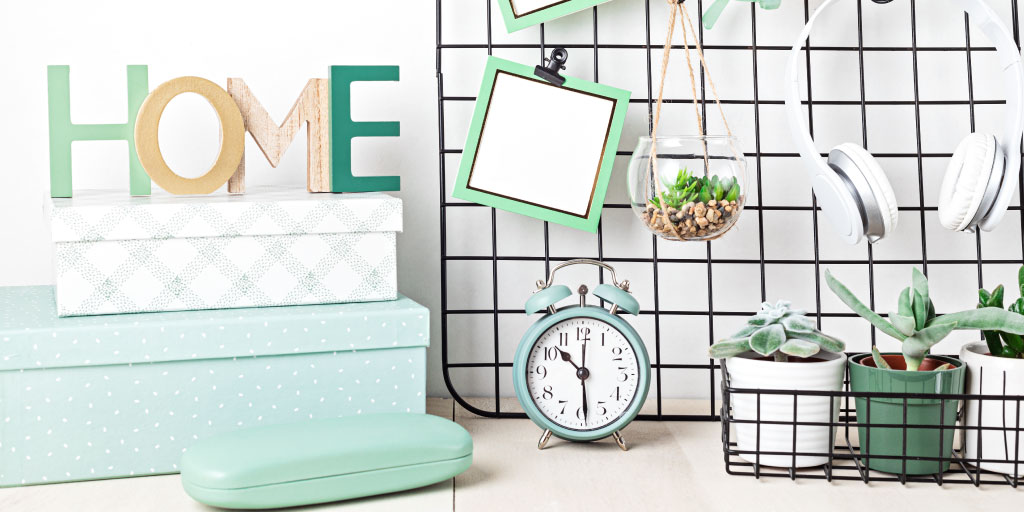Are you looking to be more organised both at home and in your day-to-day schedule?
Did you just buy a whole host of storage boxes and labels?
Still wondering where to start?
It’s common for people to take a step back and think, ‘What could I do better?’ Without knowing where to start, your commitment to getting organised could fall flat on its face. Especially if you’re bringing the whole family along for the ride, it can get lost on a to-do list that is never-ending.
Being more organised can give you more time for fitness and healthy eating. With the whole family involved you can easily release some of the burdens of your day-to-day activities. For children, it’s a great opportunity to teach them some important life skills that will hold them in good stead as they get older.
The question is where should you start?
1. Swap morning madness for a morning of calm
Mornings can be a huge scramble for the door for everyone. Swap the scramble for calm by creating cards with a timetable of activities necessary for the morning. They should detail your morning timetable and can be placed on fridges, cupboards and doors. The idea is that it prevents any one person from burning themselves out multi-tasking grabbing bookbags, making breakfast and doing the school run!
For children, the small notecards are easy to hold and use, and can give them ownership over their own morning preparations. You can even extend the use of these cards for the evenings, to remind your children of what things they need to pack and when.
2. Plan your meals ahead of time
Planning your meals ahead of time can be a great stress reliever in a family environment. Evening and lunchtime meal preparations can also prevent you from seeking takeout menus to sate your hunger. Opt for a similar method to plan snacks for your children before and after extracurricular activities.
Try using cards or printable timetables to write down your meal alongside a proposed time of when you’d like to serve it. The cards can be labelled with the days of the week, and the proposed ingredients. This is a perfect opportunity to get your children involved in some word games, kitchen tasks and assess what types of ingredients you’re using. Choose healthy!
3. Create a command centre for your family activities
A command centre is basically the hub of all activity in your household. Consider using a corkboard, whiteboard, or even the fridge door where you put down the activities that you have that week. Add a calendar to the board to help you check off dates for large events such as performances or larger family outings.
Practice reminding your family to check the command centre or adding things to it. That way, it will quickly become the way your household functions.
4. Create a visual schedule
You can help children take ownership of their day by helping them to create visual timetables. There are printer-friendly timetables available on sites such as Pinterest, where they can fill in their classes and extracurricular activities. The importance here is the visual element. The pictures help them tie tasks to easily recognisable images, that remind them of what is required to complete them.
5. Create a set up for your particulars
You probably have a rotation of clothes you wear to work and a set of items you usually bring on your commute. It’s something you can translate into a system for setting up school uniforms and keeping together homework and hair accessories. Create an easily accessible hanging system for school uniforms, hanging up trousers skirts, and jumpers for the week ahead, based on their frequency of use.
Boxes that are individually labeled can help children separate homework from hair accessories, and bags for sports and dance classes. This is great for direction in the mornings and evenings. You can simply instruct them to check a box containing any of the items in the morning and remind them where they should be in the evenings. This is the type of organisational task that they can modify and use as they get older.
6. Creating a household task chore wheel
Organising a chore wheel can be a chore in itself, especially if the thought of adding children to it, gives you a headache! But household chores and the dissemination of them are an essential life skill for children. It can be one of the first opportunities to learn about cleaning, cooking, and other household chores. The chore wheel will keep them on target and as an added benefit, you can use it to allocate pocket money!
Use a simple plastic or wicker basket to start with for them off with tidying. They can fill them, and then use the basket to put their items back in their correct places.
7. Digitise or organise your to-do list
It’s time to get rid of the scribbled to-do lists on random pieces of paper. Having so many notes in so many different places makes it difficult for you to keep track of everything. Centralising all your notes in one place can benefit the whole family. You can use printable to-do lists, post-its, diaries, or choose to digitise.
Trello and Todoist are digital to-do list platforms that will allow you to organise a myriad of household and work tasks. You can set dates, general importance levels and add those lists to all your electronic devices.
Whatever the time of year, make sure you’re at the top of your game and keep your family synchronised!











